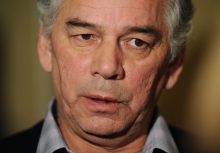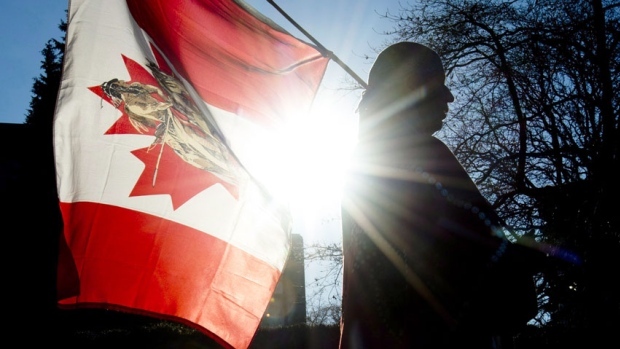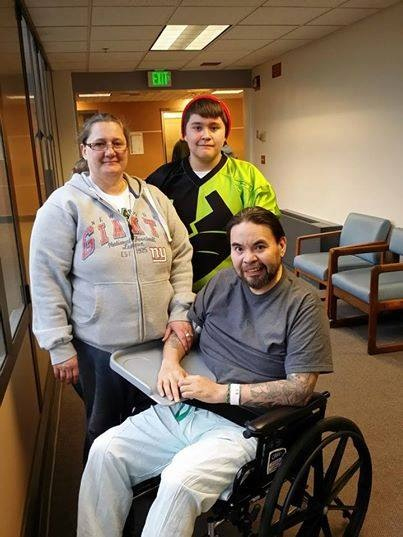Aboriginal people may find themselves with even less power to create change
By Hayden King, for CBC News, Canada, Aug 02, 201
This week the federal government’s legislation, The First Nations Financial Transparency Act (FNFTA), was made law.
Financial statements and salaries of First Nation council’s were posted on Aboriginal Affairs and Northern Development Canada’s website earlier this week. And those councils who refuse to participate will face a court order.
According to Aboriginal Affairs Minister Bernard Valcourt, this is an effort to provide First Nations people with transparency and allow them to hold their elected leaders accountable. In other words, to empower them.
Given the early reactions to the publication of this data, I don’t share the assessment. So what can we expect?
First, we can expect the media to find a handful of chief and councils that pay themselves unjustifiable salaries.
This reporting has already begun and at least one B.C. chief has found himself on national news broadcasts and other national media for consecutive days.

Of course, this information is important to know. But we can also expect the media to do little else. Few will cover the hundreds of chiefs and/or councils that make $10,000 a year. Few will examine the extreme AANDC underfunding this new data reveals.
Few will ask critical questions about the consequences of First Nations (which are often both governments and corporations) disclosing the details of business dealings with current and/or future negotiating partners.
Second, because of the likely superficial media reporting we can expect many to run with the popular “corrupt chief” narrative to shape their desired policy changes.
Many so-called experts on First Nations peoples in the media and politics will generalize to indict all leaders as taxpayer leeches (though the language will be more delicate).
‘With the media identifying the problem of corrupt chiefs and so-called experts proposing assimilatory solutions, there will be confirmation that the Indian problem is the Indian’s own fault’– Hayden King
Certainly we’ll see organizations like The Canadian Taxpayers Federation, which spearheaded the legislation in the first place, use the generalization to call for the erosion of treaties, end of “special” Indian status, privatization of reserves, etc. While taxpayer activism is certainly common, it seems to provoke a special kind of fury when involving Indigenous Peoples.
Third, we can probably expect many Canadians to harden their perspectives on First Nations peoples.
With the media likely focusing on the corrupt-chiefs problem and the so-called experts proposing assimilatory solutions, that will be confirmation for many that the Indian problem is the Indian’s own fault.
And since the challenges indigenous people face will be perceived as a self-inflicted suffering, many Canadians will feel absolved of any responsibility to First Nations, and will instead feel permitted to cast judgement and simply wait for civilization to reach the natives.
In short, the transparency act will be an effective tool to solidify apathy and disengagement with indigenous perspectives and ideas.
Fourth, we can probably also expect the federal government to double-down on the unilateral “aboriginal” policy that has been ongoing for some time.
This includes stripping communities of power in areas of social policy, extinguishing rights and title, reducing program resources, andgenerally trying to transform communities into municipalities under provincial jurisdiction.
With the First Nation leadership being stripped of legitimacy, and Canadians oscillating between aloof and angry, much of the opposition to this increasingly transformative trend will be neutralized. The FNFTA may actually grant AANDC greater licence to intervene in the lives of indigenous peoples.
Finally, we can expect First Nations people to use this data to continue to hold their leadership accountable.
The reality is that most communities already have access to this information (and much more) and generally they do not skirt or ignore issues of bad governance.
From the broad Idle No More movement to specific cases like the ongoing Wahta Community Fire in central Ontario (where a Kanien’kehá:ka community shut down its administrative building because the band council wasn’t following transparency rules), the formal and more provocative examples of communities holding leaders accountable and pushing for new (or very old) governance models independent of the Indian Act are numerous.
‘In an era where reconciliation actually means confrontation and our public discourse is often shallow, every new policy, law, court decision, protest and blockade is a struggle to shape the narrative’– Hayden King
All of this is not an argument against the legislation itself or an endorsement of the status quo.
Aside from the obvious absurdity of Canada continuing to dictate to and administer First Nation communities, the content of the legislation is relatively benign. But the consequences may be significant.
In an era where reconciliation seems more to mean confrontation and our public discourse is often shallow, every new policy, law, court decision, protest and blockade is a struggle to shape the narrative.
Despite what Bernard Valcourt claims about the FNFTA, First Nations may find themselves with even less power to create change.



